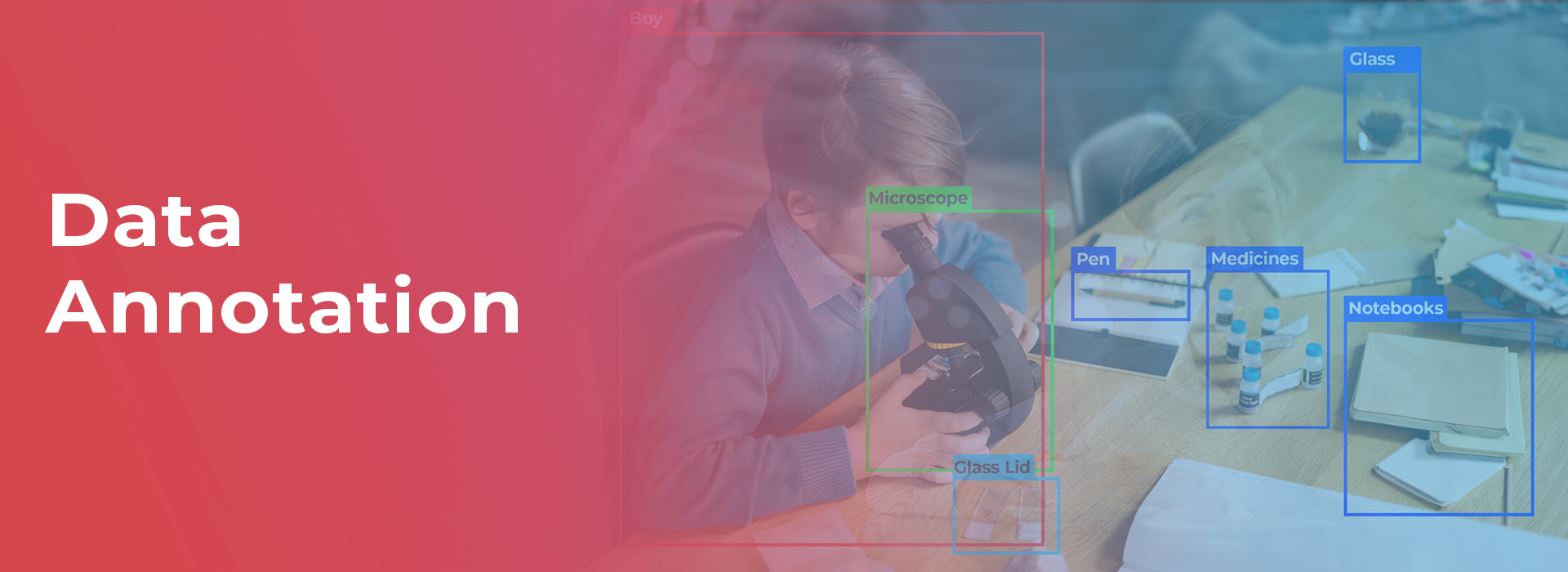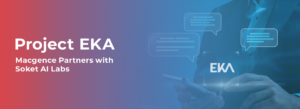Data Annotation: A Critical Step in AI and ML
In AI and machine learning algorithms, data annotation creates highly accurate ground truths that directly affect algorithm performance. For AI and machine learning models to detect and understand input data accurately, annotated data is crucial.
Our daily lives are increasingly reliant on smart equipment and smart lifestyles. Everything is powered by Artificial Intelligence (AI) and Machine Learning (ML), from self-driving cars to smart, nudge-based replies to emails to predicting the arrival time through GPS apps.
In order to achieve this, Need data for AI and machine learning models. AI and machine learning algorithms are dependent on data. In order for a computer to make decisions, it needs to be told what it’s interpreting and given context.
The annotation ensures the scalability of AI or machine learning projects. It involves identifying and labelling data, images, and videos. Machines will be able to identify and classify information as humans do – and make predictions based on it. It is impossible for ML algorithms to compute the essential attributes without labelling the data.
What is Data Annotation?
Data Annotation is a process of marking up the data to make it easier for a machine learning algorithm to understand and categorise the data. For AI models to be trained, this process is crucial, as it enables them to comprehend various types of data, such as images, audio files, video footage, and text. Clearly, labelled data sets are necessary for supervised machine learning, so the machine can understand the input patterns more easily.
As a result, data needs to be precisely annotated using the appropriate tools and techniques to be able to train the computer vision-based machine learning model. As we label elements in the data, ML models understand exactly what they are going to process and use that information to automatically make decisions based on information that is already available.
Why is Data Annotation Important for AI and ML?
As humans learn from experience, computer systems learn from data to improve their performance. To train algorithms to recognize patterns and make accurate predictions, data annotation, or labeling, is crucial.
Annotating data to ensure accuracy and effectiveness is crucial to building accurate models for practical applications. It is only possible for machine learning models to discover patterns and relationships in data if the data is labeled correctly. Models with poor AI Data Annotation will perform poorly and make unreliable predictions. A poor annotation might also result in inaccurate generalizations.
Challenges of Data Annotation
The following are some challenges associated with Data Annotation in AI and machine learning:
- Time-consuming: It is a time-consuming process as it involves manually labeling each data point, which can be tedious.
- Labour-intensive: Depending on the dataset size, it can require a lot of human labor to ensure accuracy and consistency.
- Subjectivity: Different annotations may have different opinions and interpretations about what counts as an appropriate label or category for a particular item.
- Costly: Depending on the severity of the task and the level of expertise required, high-quality data annotation services can come at a premium cost.
- Bias: Annotators may unintentionally introduce biases into the dataset through their own interpretations and understanding of different categories or labels.
These challenges highlight the importance of standardised Data Annotation processes to ensure that datasets are accurate, consistent, and unbiased.
Best Practices for Efficient Data Annotation
The following are some best practices for efficient annotation:
- Labelling guidelines should be defined clearly and concisely in order to ensure consistency in annotator labelling.
- Annotators should be trained properly on labelling guidelines, provided with feedback, and their work monitored to ensure quality.
- When possible, use software tools to automate the Data Annotation Process, reducing errors and labour costs.
- In order to prevent annotation fatigue and maintain efficiency during the process, break up large datasets into smaller tasks.
- It is important to find the right balance between accuracy and efficiency since it can be expensive to correct after the fact.
- Using multiple annotations or cross-validation techniques improves annotation quality by averaging out subjective biases in individual interpretations.
These best practices will ensure high-quality and cost-effective labelled Datasets during Machine Learning training while saving time.
Future of Data Annotation in Machine Learning
With advances in technology and artificial intelligence, data annotation in machine learning has a bright future. These are some possible trends for data annotation in the future:
- AI allows machine learning algorithms to annotate data quickly and accurately without human intervention through automated processes.
- Human-machine collaboration makes Data Labelling more accurate because both parties contribute to one another’s skills.
- Pre-trained models are used to annotate existing datasets using transfer learning techniques, reducing the time and effort required to train a model from scratch.
- Using multiple input modes such as images, text, audio, and video will become increasingly necessary as AI applications integrate multiple input sources.
We can expect further improvements in data annotation accuracy and efficiency as AI technologies advance.
Conclusion
In conclusion, data annotation is a crucial step in AI and ML that cannot be ignored. It provides the necessary context and understanding for machines to make accurate predictions and decisions. Using state-of-the-art tools and techniques, Macgence team of experts provides quality data annotation tailored to your specific requirements. In the annotation of data, we know it can be time-consuming, labour-intensive, costly, subjective, and prone to bias, but we are here to assist you. While saving you time, we provide high-quality datasets for training your machine-learning models based on our efficient processes and best practices. Contact us today for a free consultation on how we can assist with your next AI or ML project!
FAQs
Ans: – Data Annotation is a process of marking up the data to make it easier for a machine learning algorithm to understand and categorise the data. This involves identifying and labelling data, such as images, audio files, video footage, and text.
Ans: – Data annotation is critical for AI and machine learning because it trains algorithms to recognize patterns and make accurate predictions based on input data. Without proper datasets Labelling, models may perform poorly or make unreliable predictions.
Ans: – Some best practices include developing clear labelling guidelines, training annotators properly on guidelines with feedback and monitoring their work quality constantly during labelling processes; using software tools where possible to automate the process; dividing large datasets into smaller tasks to avoid annotator fatigue; finding a balance between accuracy requirements with cost constraints as errors can be expensive after-the-fact; employing multiple annotators or cross-validation techniques.
You Might Like
February 28, 2025
Project EKA – Driving the Future of AI in India
Artificial Intelligence (AI) has long been heralded as the driving force behind global technological revolutions. But what happens when AI isn’t tailored to the needs of its diverse users? Project EKA is answering that question in India. This groundbreaking initiative aims to redefine the AI landscape, bridging the gap between India’s cultural, linguistic, and socio-economic […]
April 1, 2025
The Strategic Benefits of Partnering with Macgence for Model Evaluation and Validation
In the rapidly evolving AI landscape, ensuring robust model performance is not just an advantage—it’s a necessity. For businesses leveraging AI/ML technologies, partnering with a specialized validation partner like Macgence can mean the difference between unreliable prototypes and enterprise-grade AI solutions. At Macgence, we bring unmatched expertise in AI model evaluation and validation to help […]
March 24, 2025
Natural Language Generation (NLG): The Future of AI-Powered Text
The ability to generate human-like text from data is not just a sci-fi dream—it’s the backbone of many tools we use today, from chatbots to automated reporting systems. This revolution in artificial intelligence has a name: Natural Language Generation (NLG). If you’re an AI enthusiast or a tech professional, understanding NLG is essential for keeping […]
March 24, 2025
HITL (Human-in-the-Loop): A Comprehensive Guide to AI’s Human Touch
The integration of Artificial Intelligence (AI) in various industries has revolutionized how businesses operate. However, AI is not infallible, and many applications still require human intervention to enhance accuracy, efficiency, and reliability. This is where the concept of Human-in-the-Loop (HITL) becomes essential. HITL is an AI training and decision-making approach where humans are actively involved […]


 Previous Blog
Previous Blog







